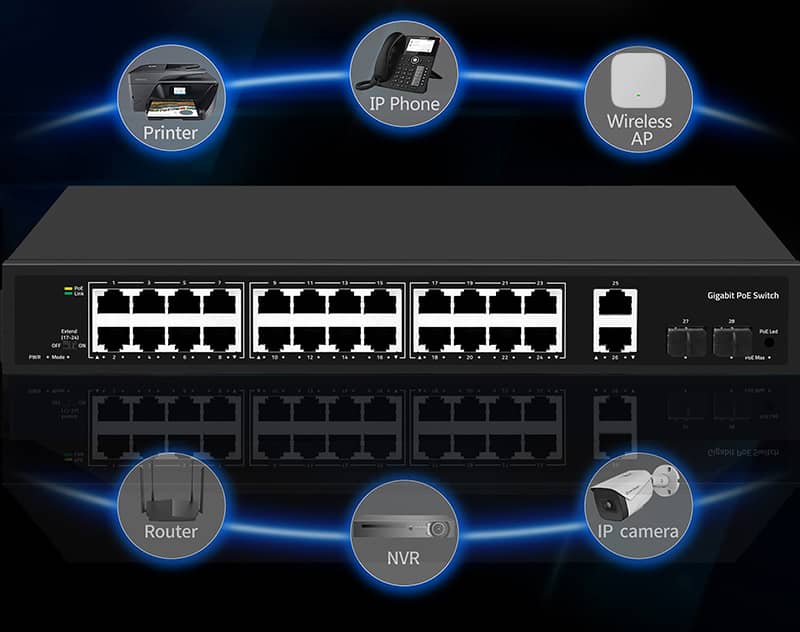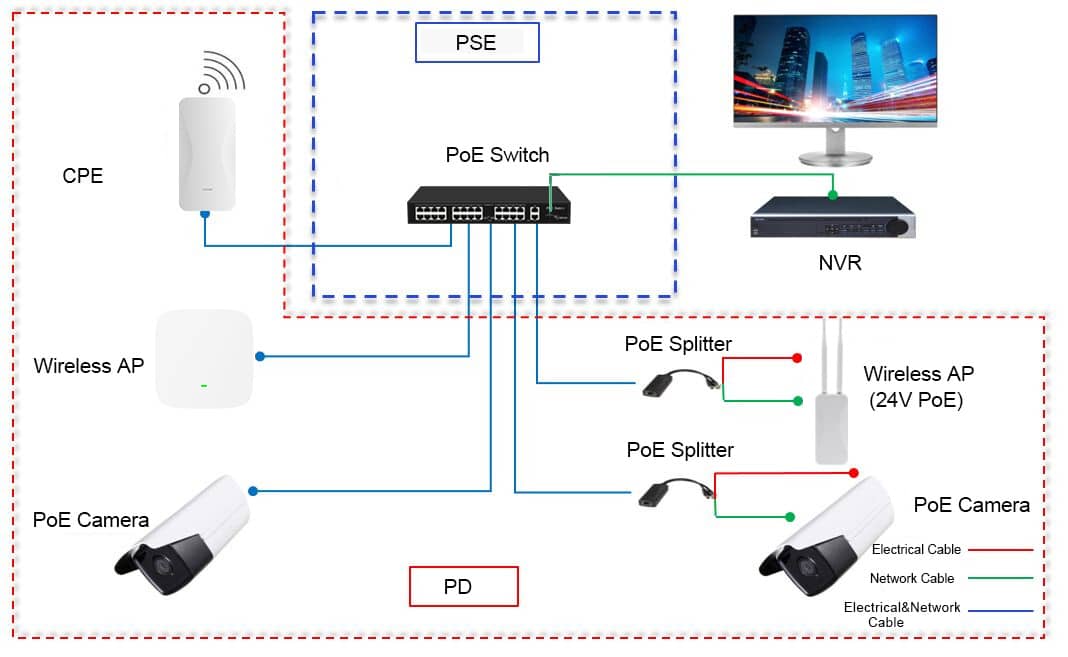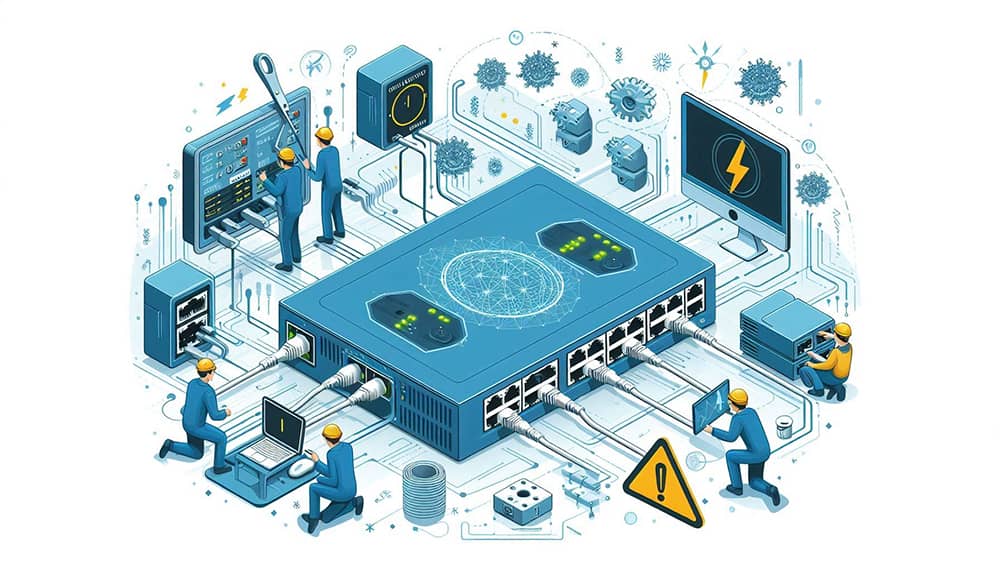What is a PoE Switch
 terry11
terry11
Exploring the Basics of PoE Switches
In the realm of modern networking, PoE switchesplay a pivotal role in streamlining and optimizing data and power transmission.
What is a PoE Switch?
Definition and Basic Function
A PoE Switch is a network switch that has the capability to transmit both data and power over Ethernet cables. This integration eliminates the need for separate power sources, simplifying network infrastructure and deployment.
The Role of PoE in Modern Networking
The advent of PoE Switches has revolutionized networking by enabling the seamless integration of various devices into a unified system. This technology facilitates the deployment of devices such as IP cameras, wireless access points, and VoIP phones without the need for dedicated power sources at each location.

The Evolution of PoE Technology
From Simple Power Solutions to Complex Networking
Initially designed as a simple solution for providing power to network devices, PoE technology has evolved significantly. It now encompasses sophisticated protocols and standards that support complex networking environments, offering enhanced flexibility and scalability.
How PoE Switches Work
When it comes to understanding the mechanics behind PoE switches, it's essential to grasp how these devices efficiently transmit both power and data over Ethernet cables. This innovative technology has significantly transformed the way network infrastructure is designed and deployed.
The Mechanics Behind PoE Switches
Transmitting Power and Data Over Ethernet Cables
PoE switches operate by sending power and data signals over standard Ethernet cables, typically Cat5e or higher. This integration of power and data transmission streamlines the installation process for various network devices, eliminating the need for separate power sources at each endpoint.
Standards and Protocols for PoE
The functionality of PoE Switches is governed by established standards and protocols that ensure seamless interoperability across different networking equipment. These standards dictate the maximum power that can be delivered, as well as the negotiation process between the switch (PSE) and connected devices (PDs) to determine power requirements.
PoE Switch Components and Design
Understanding Power Sourcing Equipment (PSE)
At the core of a PoE Switch lies the Power Sourcing Equipment (PSE), responsible for delivering power to connected devices. PSEs come in various configurations, including end-span PSEs integrated into network switches, mid-span PSEs installed between the switch and end devices, and high-power PSEs designed for demanding applications.
The Role of Powered Devices (PDs)

Powered Devices (PDs) are the recipients of power from PoE Switches, encompassing a wide range of network peripherals such as IP cameras, wireless access points, and VoIP phones. These devices are engineered to receive power in addition to transmitting data, simplifying their deployment in locations where access to traditional power sources may be limited.
By comprehending the operational principles behind PoE Switches along with their integral components, network administrators can make informed decisions when implementing these solutions within their infrastructure.
The Benefits of Using a PoE Switch
Implementing PoE Switches in network infrastructure offers a myriad of advantages, simplifying installations and enhancing overall performance and reliability.
Simplifying Network Installations
Reducing Cabling and Power Requirements

One of the primary benefits of utilizing PoE Switches is the significant reduction in cabling requirements. By integrating power and data transmission over Ethernet cables, the need for separate power sources at each device location is eliminated. This streamlined approach not only minimizes the clutter of cables but also reduces the overall cost and complexity of network installations.
Enhancing Flexibility and Scalability
PoE Switches provide unparalleled flexibility in deploying network devices, allowing for easy relocation or addition of devices without the constraints of traditional power outlets. This scalability enables network administrators to adapt to evolving infrastructure needs seamlessly. Additionally, the standardized nature of PoE technology ensures interoperability across various devices, further enhancing flexibility in network design.
Improving Network Performance and Reliability
Ensuring Consistent Power Supply

The reliable delivery of power through PoE Switches contributes to enhanced network performance and uptime. With a centralized power source, the risk of individual device outages due to power disruptions is mitigated. This consistent power supply is particularly crucial for critical applications such as surveillance systems and access control, where uninterrupted operation is imperative.
Benefits for Specific Applications (e.g., IP Cameras, Access Points)

PoE switches offer tailored benefits for specific applications, notably IP cameras and wireless access points. The seamless integration of these devices with PoE technology eliminates the need for separate electrical wiring at installation sites. This not only simplifies deployment but also allows for strategic placement of devices without being limited by proximity to power outlets.
Choosing the Right PoE Switch for Your Needs
When considering the selection of a PoE Switch, several essential factors come into play to ensure that it aligns with the specific requirements of a network infrastructure.
Considerations for Selecting a PoE Switch
Assessing Power and Data Requirements
Before investing in a PoE Switch, it's crucial to evaluate the power and data needs of the intended network devices. Understanding the power consumption and data transmission capabilities of connected devices is fundamental in determining the appropriate power budget and switch capacity required for seamless operation.
Compatibility with Devices and Network
Another critical consideration revolves around ensuring compatibility between the PoE Switch and the network devices. This entails verifying that the switch supports the required standards and protocols compatible with connected powered devices. Additionally, assessing network compatibility ensures that the switch seamlessly integrates into the existing infrastructure without causing disruptions.
Tips for Making an Informed Decision
Budget Considerations
While evaluating PoE Switches, it's essential to weigh the cost implications against the features and capabilities offered. Balancing budget considerations with performance requirements is vital in making a cost-effective investment that meets both current needs and future scalability.
Future-Proofing Your Network Infrastructure
Future-proofing your network involves selecting a PoE Switch that not only meets current demands but also accommodates potential expansion and technological advancements. Opting for a switch with advanced features such as higher power budgets, enhanced management capabilities, and support for emerging standards can safeguard against premature obsolescence.
EndFragment
Subscribe to my newsletter
Read articles from terry11 directly inside your inbox. Subscribe to the newsletter, and don't miss out.
Written by

terry11
terry11
Engaged in network connectivity equipment for twelve years, focusing on the reliability and excellent performance of network connectivity equipment